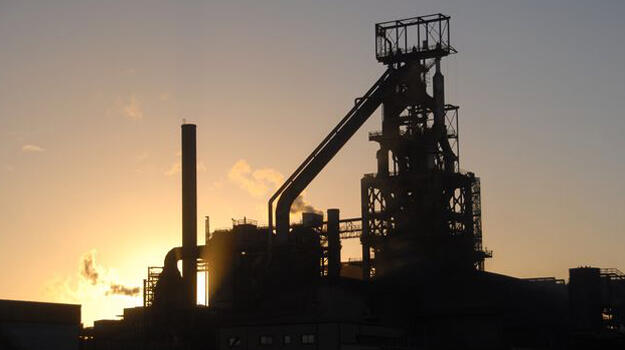Embodied energy, as the name implies, is the total combined energy of all types required to produce a specified something – usually a product or service.

Energy, according to my physics teacher and some bloke called Issac Newton, can be neither created nor destroyed, but only converted between forms. So goes the first law of thermodynamics and there is no alternative.
Embodied energy, as the name implies, is the total combined energy of all types required to produce a specified something – usually a product or service. You could calculate the embodied energy of a cup of tea or a mile long stretch of motorway. Like a great many things the concept is seductively simple but the reality of actually arriving at an accurate and agreed figure can be fraught with potential difficulties.
Let’s take a randomly selected construction material as an example. Let’s choose Steel. (do you see what I did there?)
All steel begins life as iron, and iron is produced by the reduction of iron ore (mined, processed, transported), calcium carbonate in the form of limestone (quarried, processed, transported) and coke, made from coal (mined, processed, transported, processed) in a blast furnace (BF).
The iron is turned into steel by reducing the carbon content by controlled oxidisation in a process called Basic Oxygen Steelmaking (BOS) where oxygen is blown through the molten iron. The resulting steel is cast into shapes which are then further rolled into more recognisable shapes, beams, columns, angles and coils. Further processing results in more refined products such as tubes, cladding panels and roofing. Third party companies take rolls of steel and stamp and press it into cars, fridges, air conditioning duct and all manner of items large and small.
By the time the iron ore has been turned into a steel artefact it will have acquired about 20Gj of embodied energy per tonne.
This is where things get complicated. Steel is also produced by the electric arc furnace (EAF) and the feedstock here is recycled steel. Theoretically it is possible to discount the energy used up to that point and just calculate the EAF steel’s embodied energy. Unfortunately this methodology ignores the requirement of primary steel always being available (with a growing requirement for steel) to make up enough new feedstock for the EAF route to use. So a combined figure was arrived at and is used and adopted by all steelmakers – being the previously quoted 20 Gj/t. This is why we never describe EAF steel as ‘green’ or ‘recycled’ – to do so ignores the necessity of continuing to produce steel via the BF BOS route.
Understanding the quantity of energy required to make a product is only part of the story. We also have to consider the usefulness, longevity and recyclability of the product. A massively expensive but ultimately useless thing is less easy to justify than an expensive but useful one (here begins a separate debate about beauty and art which is the subject of a forthcoming coffee table book and not for discussion here).
Steel is undoubtedly useful, it is pretty much everywhere and knitted, stitched, concreted, bolted and welded into our modern world. Used properly its embodied energy can become houses, hospitals, offices, bridges, ships, cars, trains, cutlery, pins. It’s about how we use, recycle and reuse materials with high embodied energy, not whether we should use them, because with some things there is no alternative.











































































































































































